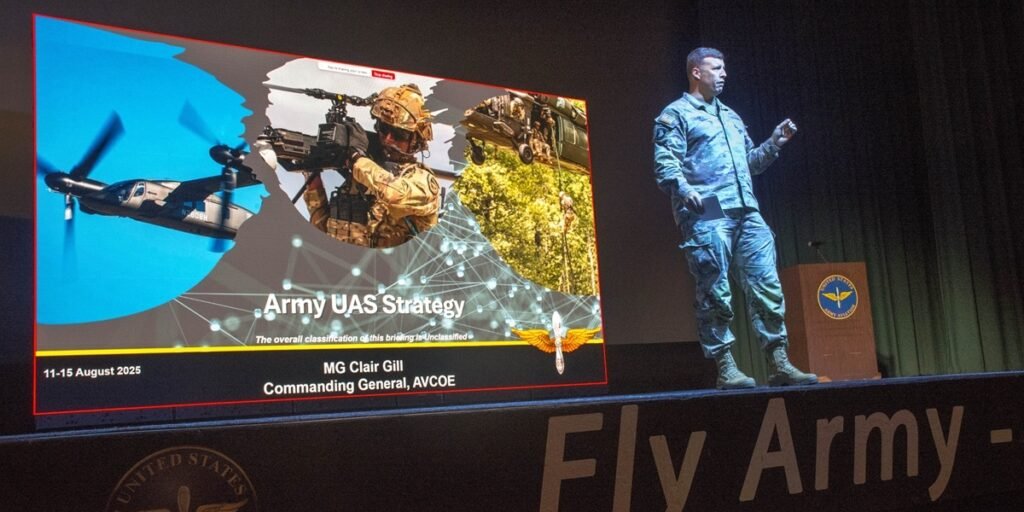Army’s Unmanned Aerial System Summit Kicks Off
The Army’s unmanned aerial system summit began on August 11, marking the start of a week-long series of discussions and demonstrations.
Major General Claire Gill, who leads the Army Aviation Center of Excellence at Fort Rucker, opened the event by urging attendees to recognize the versatility of unmanned aerial systems (UAS) beyond just air support, suggesting they could enhance the capabilities of the entire military.
“The battlefield is busy, so it’s essential to consider your enemies’ actions just as you focus on your own,” Gill remarked. He emphasized the pressing need to innovate and accelerate UAS integration into operations.
Referencing recent global developments, he noted the decision to relax restrictions on UAS acquisition would facilitate the Army’s use of smaller systems in various roles. He underscored the importance of blending these systems with piloted aircraft, as the Army’s aviation mission evolves alongside technological advancements.
In his address, Gill also outlined plans to combine distinct roles of UAS operators and maintainers into a unified specialist field, stating that training for the first wave of soldiers in small UAS operation and maintenance has already begun.
“We’re setting up a course in Hawaii to educate our personnel on these new military specialties,” he said.
Gill highlighted that the shift towards small UAS represents a significant transformation for the Army, as these systems would be deployed at lower tactical levels than before. However, he also mentioned the potential of emerging technologies to relay critical information back to larger units.
“Our goal is to integrate effects at every level. Perhaps a platoon could use a UAS to support a company or battalion, locating targets we may not even be aware of,” he explained.
He conveyed his vision where UAS are not just platforms for sensors but are used for electronic warfare, psychological operations, and even as communication expanders for other weapon systems.
“The direction we’re heading in is quite exhilarating,” Gill added.
Notably, the summit followed a historic event at Fort Rucker, where the Army achieved its first air-to-air kill using an armed first-person view (FPV) drone during a training exercise. Two warrant officers engaged in a simulated dogfight using armed drones, showcasing their effectiveness.
Gill noted that an increase in UAS diversity and numbers would significantly impact airspace management and overall battlefield tactics.
“Flying at lower altitudes means reducing the worry mainly to aviators and artillery. It’s part of our strategy for security,” he stated.
In a lighter moment, Gill discussed the formation of an Army drone racing team and how competitions help foster new tactics, ultimately benefiting soldiers in practical scenarios.
Following Gill, Colonel Joshua Ruizanchez elaborated on the future roles of UAS operators and highlights the recent uptick in civilian-manufactured drones approved for Army use, expanding their inventory substantially.
Colonel Nicholas Ryan then offered insight into how these developments could enhance units’ capabilities, including the creation of an online marketplace to streamline drone acquisitions for brigades. “Now, commanders can easily procure a drone,” Ryan noted.
He also addressed the need to shift the Army’s understanding of UAS from seeing them as fragile items requiring meticulous oversight to embracing smaller, more affordable drones as standard equipment. “We ought to treat drones as basic tools, akin to radios and night vision gear,” he remarked.
The UAS and Effects Summit is set to unfold over the week, featuring live demonstrations, panel discussions, and various presentations.







